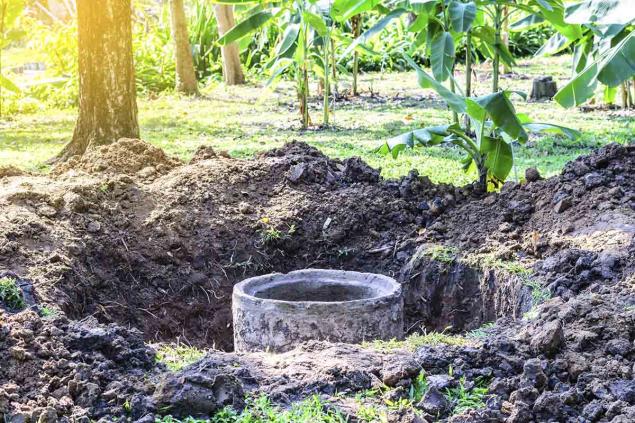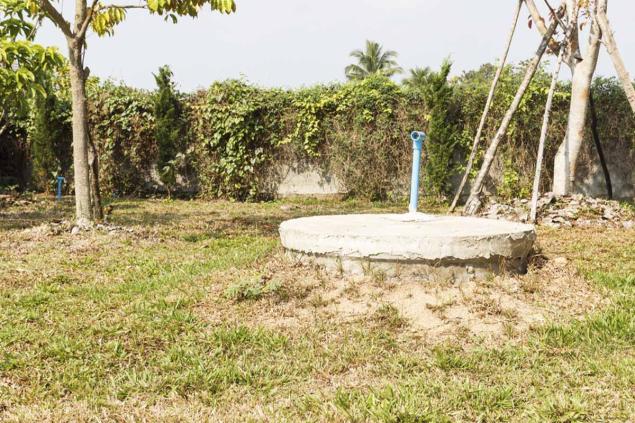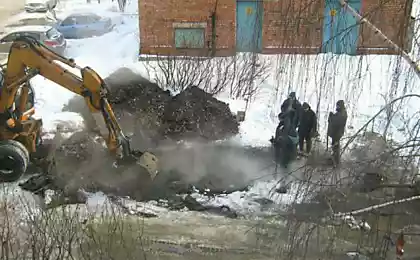139
A man I worked with at a construction site told me what to do so that the cesspool no longer has to be pumped out.
More recently, in the countryside and in the private sector of the city, all amenities were in the yard. Then sinking It was to release a container filled with feces. Now the owners are trying to equip their lives as much as possible, so in each house there is running water, and accordingly, sewerage. There drains all the dirty liquid, which further accumulates in the septic tank.

This is all great, if not for cleaning the cesspools, which eventually fill up faster. It is necessary several times a year to call drainers with a machine to pump out the contents of the drain. For the service, the client pays out of his pocket, and he usually cannot save.

The question arises: why does the water stop flowing out of the cesspool?
The reason for the rapid filling of the cesspool can be ill-conceived design and inconsistency of materials for its construction. Choosing the wrong location for the pit can make things worse. The presence of passing groundwater nearby will cause its involuntary flooding.

It is also to blame for the critical filling of the drainage capacity of the soil. It is contaminated with household waste every day more and more and turns into a dense mass that ceases to absorb moisture. The consistency of the ground around the septic tank becomes similar to the bottom of the pond: solid and retains water.
Ways to eliminate the problem with frequent pumping of a garbage pit After removing the accumulated liquid by the drainers, it is recommended to collect all the sediment from the bottom. Next, all surfaces should be treated with chemical means. To qualitatively clean the tank with wastewater and return the ground to elementary throughput properties, you can use biological drugs. They should contain breakdown stimulants, enzymes and bacteria. Then the soil will acquire the previous structure, and water will again gradually seep into its deep layers.

To solve the problem with the septic tank will help the presence of two cesspool containers connected by a g-shaped pipe with direct access to the second chamber. The first tank will serve as a sink. And the second will be used for active absorption of incoming liquid by the soil.
Mounting a hole for overflow is advised in the middle. Additionally, a drainage pipe with a length of at least five meters leading from the bottom of the secondary pit in a horizontal position is laid. Thus, significantly increase the area of the absorbing surface.

Near the septic tank, it is recommended to plant trees or bushes that “love” moist soil. These include horse chestnut, willow and weeping willow. As well as white poplar, alder, birch, elderberry, cherry and kalina.
These are the most common species in our area, but everyone can choose for themselves more original or exotic plants. Their roots will actively consume excess moisture. And one full-fledged tree with a developed root system during the vegetative season can absorb up to 100 cubic meters of water. The dried soil will be able to absorb more fluid from the septic tank, and you will have to pump the drains out of its tank less often.

Equipping such a cesspool, remember that harmful substances in waste water penetrate into the soil. From there, they can seep into the groundwater and then fall into a well from which you and your neighbors draw water. There will be a cycle of impurity in nature! Please think about it!

This is all great, if not for cleaning the cesspools, which eventually fill up faster. It is necessary several times a year to call drainers with a machine to pump out the contents of the drain. For the service, the client pays out of his pocket, and he usually cannot save.

The question arises: why does the water stop flowing out of the cesspool?
The reason for the rapid filling of the cesspool can be ill-conceived design and inconsistency of materials for its construction. Choosing the wrong location for the pit can make things worse. The presence of passing groundwater nearby will cause its involuntary flooding.

It is also to blame for the critical filling of the drainage capacity of the soil. It is contaminated with household waste every day more and more and turns into a dense mass that ceases to absorb moisture. The consistency of the ground around the septic tank becomes similar to the bottom of the pond: solid and retains water.
Ways to eliminate the problem with frequent pumping of a garbage pit After removing the accumulated liquid by the drainers, it is recommended to collect all the sediment from the bottom. Next, all surfaces should be treated with chemical means. To qualitatively clean the tank with wastewater and return the ground to elementary throughput properties, you can use biological drugs. They should contain breakdown stimulants, enzymes and bacteria. Then the soil will acquire the previous structure, and water will again gradually seep into its deep layers.

To solve the problem with the septic tank will help the presence of two cesspool containers connected by a g-shaped pipe with direct access to the second chamber. The first tank will serve as a sink. And the second will be used for active absorption of incoming liquid by the soil.
Mounting a hole for overflow is advised in the middle. Additionally, a drainage pipe with a length of at least five meters leading from the bottom of the secondary pit in a horizontal position is laid. Thus, significantly increase the area of the absorbing surface.

Near the septic tank, it is recommended to plant trees or bushes that “love” moist soil. These include horse chestnut, willow and weeping willow. As well as white poplar, alder, birch, elderberry, cherry and kalina.
These are the most common species in our area, but everyone can choose for themselves more original or exotic plants. Their roots will actively consume excess moisture. And one full-fledged tree with a developed root system during the vegetative season can absorb up to 100 cubic meters of water. The dried soil will be able to absorb more fluid from the septic tank, and you will have to pump the drains out of its tank less often.

Equipping such a cesspool, remember that harmful substances in waste water penetrate into the soil. From there, they can seep into the groundwater and then fall into a well from which you and your neighbors draw water. There will be a cycle of impurity in nature! Please think about it!
The most popular foundations in 2023
Sophia Klisurskaya was St. George the Victorious and the Virgin, warning about the Third World War























